English
Why Magnetic Tiles Are the Ultimate STEM Toy for Young Engineers
Introduction
In today’s education system, STEM (Science, Technology, Engineering, and Mathematics) education is becoming increasingly important. As the demand for innovation and technical skills continues to rise, more parents and educators are realizing the crucial role of early education in shaping a child’s future. Among the many educational tools available, toys have always been a powerful medium for promoting learning and development.
Magnetic tiles, as an innovative and interactive toy, have gradually become the preferred choice for fostering young engineers. Why are magnetic tiles considered the ultimate STEM toy? In this article, we will delve into this question, exploring how magnetic tiles, through their unique features and educational value, help children develop engineering thinking, creativity, and problem-solving skills from an early age.
What Are Magnetic Tiles?
Magnetic tiles are toys that combine magnets and construction pieces. Each tile contains a magnet, allowing children to connect various shapes and colors of tiles together using magnetic force. This enables them to build 3D structures, models, or buildings freely. Compared to traditional building blocks, magnetic tiles provide more building possibilities and help children understand spatial concepts, geometry, and basic physical principles.
There are many brands on the market offering magnetic tiles. Magna-Tiles and Magformers are two of the most well-known magnetic tile brands. These brands provide a range of sets that not only spark children’s creativity in design and construction but also offer rich educational resources in geometry and physics.
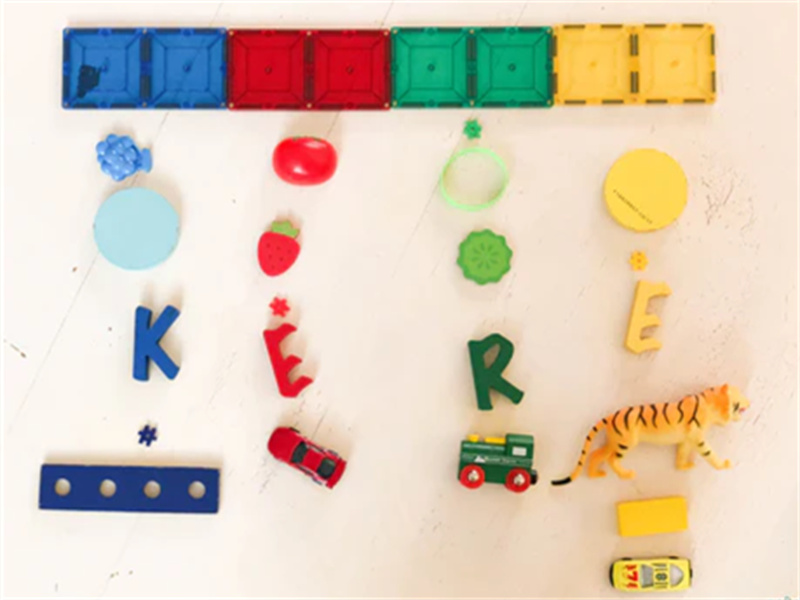
STEM Educational Benefits of Magnetic Tiles
Enhancing Spatial Awareness
Spatial awareness is a key component of STEM education, referring to a child’s ability to perceive the position, shape, and relationship of objects. Magnetic tiles help children develop spatial skills by requiring them to understand and apply spatial concepts when designing and building structures. For instance, when building a 3D tower, children need to figure out how to combine different-shaped tiles in a stable and logical way, thus honing their spatial perception.
The 3D building aspect of magnetic tiles is far more effective in enhancing spatial awareness than traditional 2D puzzles. As children experiment with different combinations of tiles, they progressively improve their ability to visualize and manipulate shapes, laying a solid foundation for future learning in engineering and architecture.
Promoting Engineering and Building Skills
Magnetic tiles are not just toys; they are tools for children to learn basic engineering and architecture. By assembling these tiles, children simulate real-world architectural and structural design, sparking their interest in engineering. Every construction process involves experimentation and adjustment, enabling children to test which structures are more stable and which designs are more creative.
For example, when trying to build a pyramid shape, children discover that certain tile arrangements are necessary to maintain balance. These real-world principles, such as center of gravity and force distribution, are explored through play. This hands-on approach helps children not only learn engineering concepts but also experience the joy of problem-solving.
Stimulating Creativity and Problem-Solving
One of the greatest benefits of magnetic tiles is their open-ended design, which encourages children to build anything they imagine. This freedom of creativity stimulates children's creative thinking and helps them view problems from different perspectives.
When building a structure, children often encounter challenges, such as instability or imbalance, which requires them to think critically and solve problems. This trial-and-error process not only helps them gain valuable experience but also enhances their ability to think creatively and tackle real-world problems. This mindset is essential for future success in engineering, science, and mathematics.
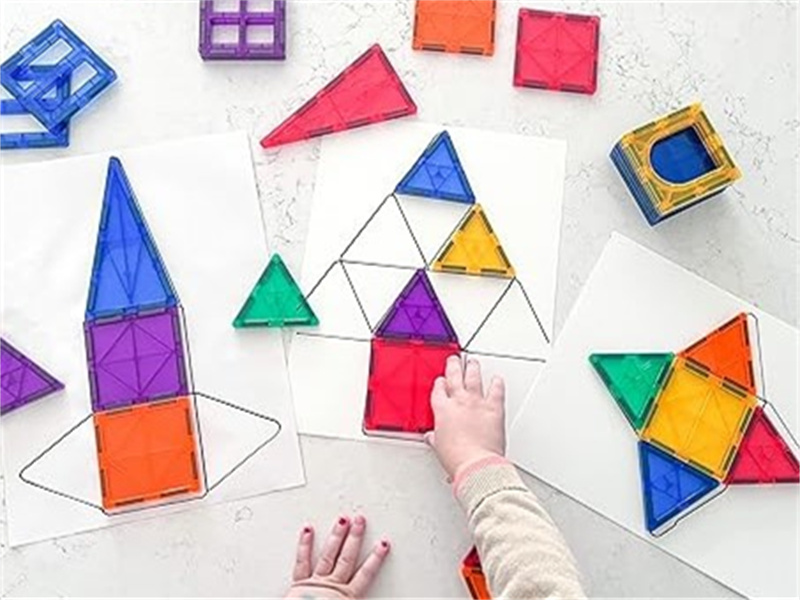
Why Magnetic Tiles Are Perfect for Young Engineers
Hands-On Exploration
Hands-on learning is at the heart of STEM education. One of the biggest advantages of magnetic tiles is their ability to allow children to explore and learn through physical interaction. Unlike traditional book-based learning, children can directly engage with these tiles, bringing their creative ideas to life. This not only deepens their understanding of abstract concepts but also strengthens their motor skills.
For young engineers, hands-on exploration is the first step in understanding engineering principles and physical laws. Through constant building and adjusting, children can feel the laws of physics in action, enhancing their engineering capabilities.
Enhancing Critical Thinking
Critical thinking is crucial for solving complex problems and making rational decisions. Magnetic tiles challenge children to engage in logical reasoning and critical thinking. For example, when building a complex structure, children need to think about how to select the right tiles, how to ensure stability, and how to avoid design flaws.
Such mental exercises help children develop excellent critical thinking skills, which are invaluable in both academic and real-world situations. By frequently practicing these exercises, children can gradually refine their ability to make sound, rational decisions when facing challenges.
Suitable for Various Age Groups
Another benefit of magnetic tiles is their adaptability for different age groups. From young children to teenagers, children can choose magnetic tile sets that match their cognitive development. Younger children can start with simple shapes to develop hand-eye coordination and spatial awareness, while older children can challenge themselves with more complex designs, such as 3D models and intricate buildings.
This versatility makes magnetic tiles a toy that can accompany children for years, offering various challenges as they grow—from basic construction to advanced engineering design, children can continue to enjoy and learn from magnetic tiles as they mature.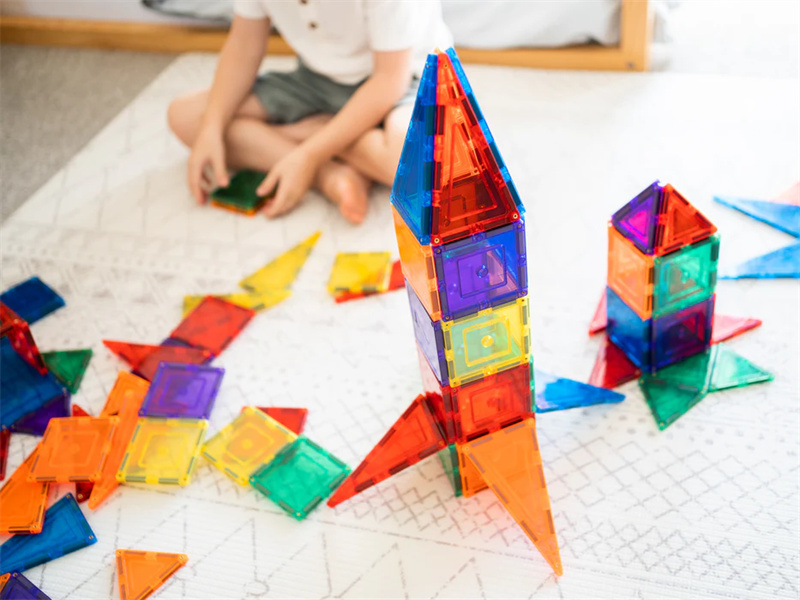
How Parents and Educators Can Use Magnetic Tiles
Parent-Child Interaction
Magnetic tiles are not just educational tools for children; they are also an excellent way for parents and children to learn and interact together. Parents can join their children in building projects, sharing in the fun and challenges of the construction process. This interaction not only strengthens the parent-child bond but also allows parents to guide their children through problem-solving, further enhancing their learning.
Research has shown that parent-child interaction is vital for a child's development, helping to improve emotional intelligence and social skills. Magnetic tiles serve as an ideal medium for such interactions, allowing children to learn through play while fostering emotional connections with their parents.
Classroom Application
Educators can also incorporate magnetic tiles into their classrooms as a teaching aid. Magnetic tiles not only help students better understand mathematical and physical principles but also promote teamwork and collaboration. In group activities, students can work together to build structures, improving their teamwork skills and social abilities.
Additionally, magnetic tiles can serve as a cross-disciplinary educational tool, covering mathematics, science, art, and engineering, helping students reinforce theoretical knowledge through practical applications.
A Tool for Home Learning
For parents, magnetic tiles are an excellent tool for home-based learning. Parents can select different magnetic tile sets based on their children’s interests and learning needs, providing additional STEM learning opportunities. In doing so, parents can provide a hands-on, educational environment for their children while exploring new concepts together.
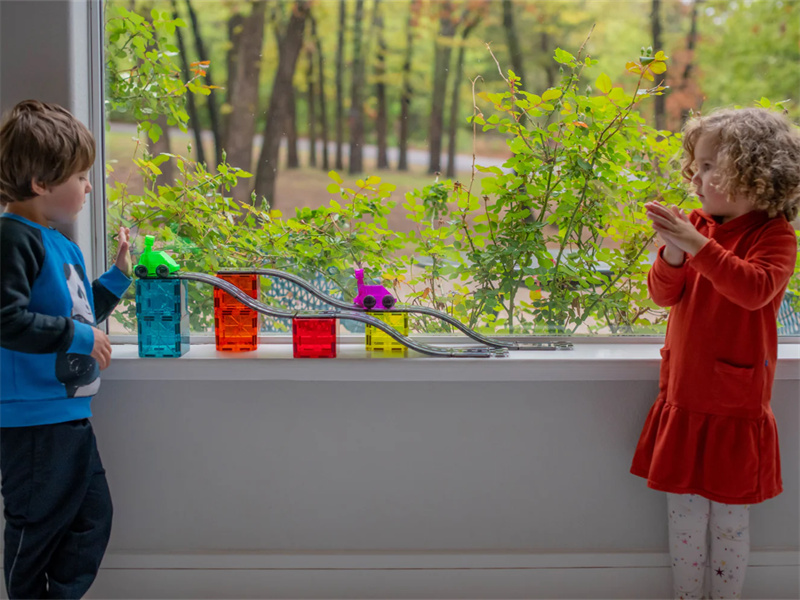
Magnetic Tiles vs. Other STEM Toys
Compared to Traditional Building Blocks
Traditional building blocks, such as LEGO and wooden blocks, can help children develop motor skills and creativity, but they lack the flexibility and convenience of magnetic tiles. The magnetic connection in magnetic tiles allows for more intuitive and complex constructions, enabling children to build more intricate structures in less time.
Compared to Electronic Toys
When compared to electronic STEM toys, magnetic tiles have the advantage of being screen-free. Children can immerse themselves in the building process without the distraction of screens or technology. This hands-on experience fosters concentration and creativity, while electronic toys often lead to over-reliance on technology, limiting opportunities for physical interaction.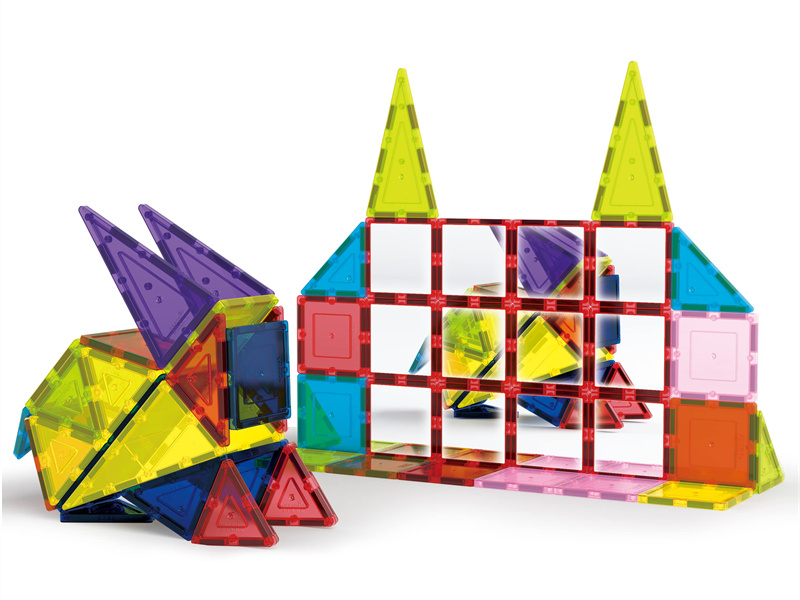
Buying Guide and Recommendations
What to Look for When Buying Magnetic Tiles
When purchasing magnetic tiles, parents should consider the following factors:
- Safety: Ensure the tiles are non-toxic and have no sharp edges, and that the set complies with safety standards for children's toys.
- Quality: Opt for durable brands that ensure the tiles will last, preventing safety hazards due to loose or broken pieces.
- Design and Functionality: Choose sets that match the child’s age and interests. Some sets feature a variety of colors and shapes, offering more opportunities for creativity.
Recommended Brands and Sets
- Magna-Tiles: Known for its wide range of sets suitable for different age groups, Magna-Tiles provides excellent quality and educational value.
- Magformers: Famous for its strong magnetic power and sturdy construction, Magformers is ideal for children who wish to challenge themselves with more complex designs.
- Playmags: Offers a variety of pieces and expansion sets that allow children to explore new and diverse building opportunities.
- DIGE: A reliable brand offering durable, colorful magnetic tile sets with strong magnets. DIGE sets are praised for their safety, ease of use, and ability to inspire creative play and learning.
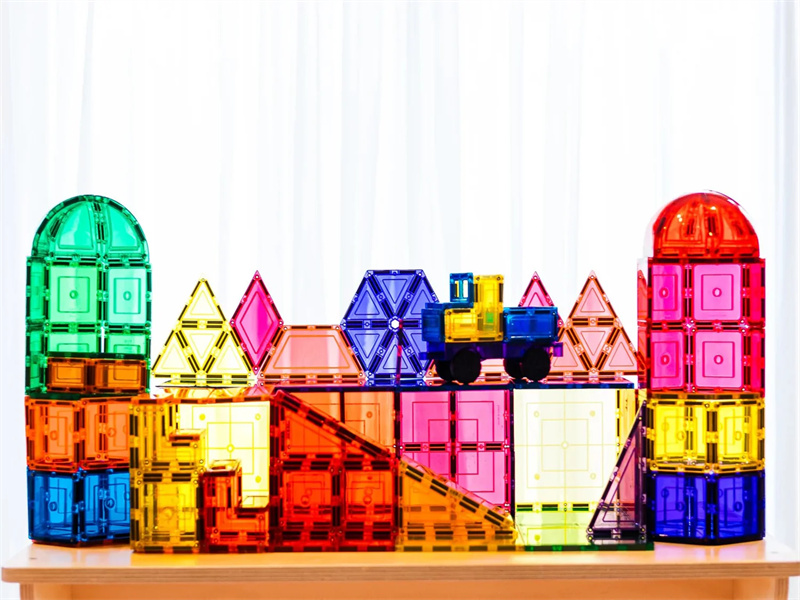
Conclusion
Magnetic tiles are not just a great STEM tool—they are an ideal choice for fostering young engineers’ development. By enhancing spatial awareness, promoting engineering skills, and stimulating creativity and problem-solving, magnetic tiles help children learn important scientific, technical, and engineering principles through play. Whether you are a parent or an educator, magnetic tiles provide rich learning opportunities that foster creativity, innovation, and critical thinking in children.
Through the analysis presented in this article, it’s clear that magnetic tiles serve as a vital "building block" on the path to developing young engineers. They open up a world of endless possibilities, where children learn and grow through play, and in turn, lay the foundation for a future of knowledge and creativity.
FAQ
Are Magnetic Tiles Safe?
Magnetic tiles are generally very safe, especially when purchased from certified brands. Always look for sets that have safety certifications like CE or ASTM, ensuring they meet safety standards and that the materials are non-toxic.
Can Magnetic Tiles Be Used with Other Toys?
Yes, magnetic tiles can be used alongside other traditional building toys, such as LEGO blocks, especially those of similar sizes. This way, children can combine magnetic tiles with other toys to create even more complex and diverse constructions.